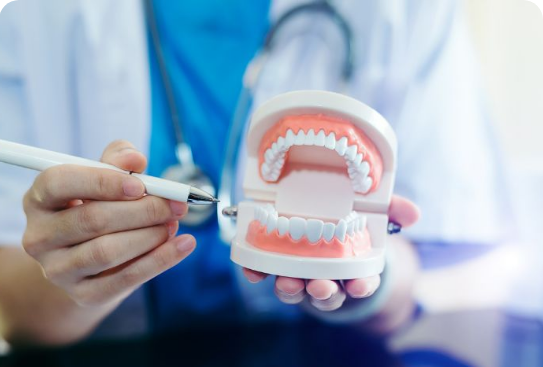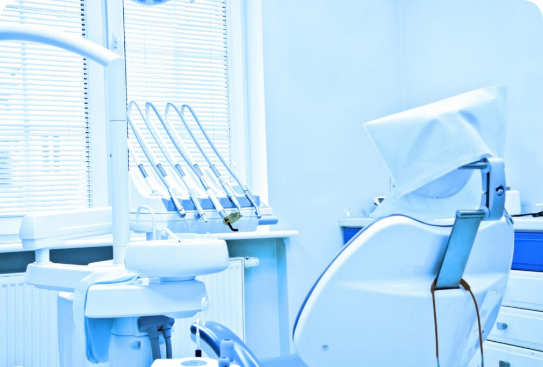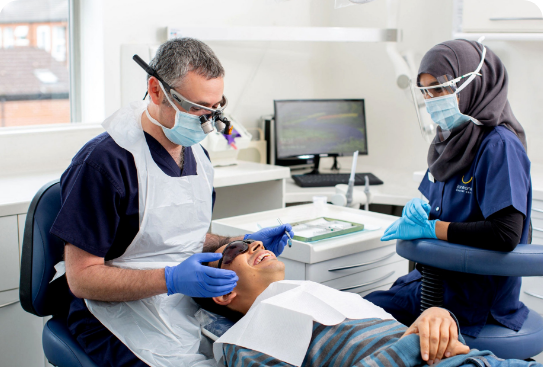Blog

Understanding Different Types of Orthodontic Treatments

by. user admin
2023-08-01
A radiant smile has the power to light up a room and boost your self-confidence. For many individuals, achieving that picture-perfect smile may require orthodontic treatment. Orthodontics, a specialized branch of dentistry, focuses on correcting dental and facial irregularities, particularly in the alignment of teeth and jaws. With a wide array of orthodontic treatments available today, individuals seeking a straighter smile have more options than ever before. In this comprehensive guide, we will delve into the various types of orthodontic treatments, their benefits, and considerations to help you make an informed decision about which option is right for you.
1.Traditional Metal Braces
Traditional metal braces are perhaps the most recognizable form of orthodontic treatment. Comprised of metal brackets and wires, these braces work by applying gentle pressure to gradually shift teeth into their desired positions. While they may not be as discreet as some newer alternatives, traditional braces remain a highly effective option for correcting even complex dental issues.
Benefits:
- Suitable for patients of all ages.
- Effective for treating a wide range of orthodontic problems.
- Generally more cost-effective compared to some other options.
- Generally more cost-effective compared to some other options.
Considerations:
- Aesthetic concerns for some individuals.
- Potential discomfort and irritation from brackets and wires.
- Frequent adjustments are required.
2. Ceramic Braces
Ceramic braces offer a more aesthetically pleasing alternative to traditional metal braces. These braces use clear or tooth-colored brackets and wires that are less noticeable, making them a popular choice for those who wish to maintain a more discreet appearance during treatment.
Benefits:
- Less noticeable than metal braces.
- Effective for various orthodontic issues.
- Ceramic material is resistant to staining.
Considerations:
- Slightly more expensive than metal braces.
- Brackets may be larger and less durable than metal counterparts.
- Potential for mild discoloration over time.
3.Lingual Braces
Lingual braces are a unique option as they are attached to the back of the teeth, making them virtually invisible from the front. This discreet choice is suitable for those who desire the benefits of traditional braces without the aesthetic impact.
Benefits:
- Hidden from view, providing a discreet treatment option.
- Effective for complex orthodontic cases.
Considerations:
- Initial discomfort and challenges with speech.
- More difficult to clean and adjust compared to other types.
- May take longer to achieve desired results.
4.Invisalign
Invisalign has revolutionized the field of orthodontics with its innovative approach. This treatment involves a series of clear, removable aligners that are custom-made for each patient. The aligners gradually shift teeth into place, and they can be removed for eating, drinking, and oral hygiene.
Benefits:
- Virtually invisible, allowing for a natural appearance.
- Removable, making it easier to maintain oral hygiene.
- Minimal dietary restrictions.
Considerations:
- Not suitable for complex orthodontic cases.
- Requires strict compliance to wear aligners for the recommended duration each day.
- Generally more expensive than traditional braces.
5.Clear Aligner Systems (Other than Invisalign)
Several alternative clear aligner systems have emerged as competitors to Invisalign. These options offer similar benefits and treatment principles, but may vary in terms of cost, treatment time, and availability.
Benefits:
- Discreet treatment with clear aligners.
- Removable for better oral hygiene and eating.
- Can be effective for mild to moderate orthodontic issues.
Considerations:
- Quality and effectiveness may vary among different brands.
- Requires consistent wear for optimal results.
- Some aligner systems may have limitations in treating complex cases.
Conclusion
Achieving a straighter smile is within reach for individuals seeking orthodontic treatment. The various types of orthodontic treatments available cater to different needs, preferences, and budgets. Whether you opt for traditional braces, ceramic braces, lingual braces, Invisalign, or an alternative clear aligner system, consulting with an experienced orthodontist is crucial to determine the most suitable treatment plan for your unique case. By understanding the benefits and considerations of each option, you can confidently embark on your journey towards a radiant, confident smile that will leave a lasting impression.
Choosing the Right Toothbrush and Toothpaste
Maintaining good oral hygiene is essential for a healthy and confident smile. While brushing and flossing form the foundation of oral care, selecti
Transforming Your Smile with Cosmetic Dentistry
A captivating smile has the power to make a lasting impression and boost one's self-confidence. However, not everyone is blessed with a perfect
The Importance of Regular Dental Check-ups
Maintaining optimal oral health goes beyond just brushing and flossing daily. Regular dental check-ups play a vital role in preventing and addressi






